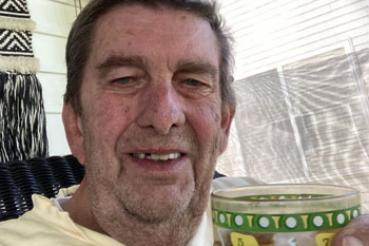If you have essential tremor or parkinsonian tremor that hasn't improved with medication, a treatment called MR-guided focused ultrasound may help you get relief.
What Is Focused Ultrasound?
Focused ultrasound is a treatment that uses sound waves, or ultrasonic energy, to heat tissue. It is noninvasive, which means it does not require any cuts or surgery.
This treatment can be used to destroy certain tissues, such as tumors or fibroids, or increase blood flow to specific areas of the body. It is FDA-approved to treat Parkinson’s disease motor symptoms.
If you have essential tremor or tremor related to Parkinson’s disease that hasn't gotten better with medication, it may help you get relief.
At Rush, we offer this treatment combined with magnetic resonance imaging. This procedure, called MR-guided focused ultrasound, enables us to precisely target the spot in your brain that controls your tremor — without open surgery.
It's important to note that this procedure, like deep brain stimulation, does not treat your underlying disease or prevent disease progression.
How Does Focused Ultrasound Treatment Work?
Ultrasound is typically used to diagnose problems. But in this case, it's used as a therapy.
During the procedure, high-intensity focused ultrasound is directed from different angles toward part of the brain. This can be the ventral intermediate nucleus, or VIM, of the thalamus or the globus pallidus internus (GPi).
When these sound waves come together in the target, they create enough heat to make a tiny lesion in the brain, which has a therapeutic effect.
You will be inside an MRI scanner during the entire procedure. This lets your doctor easily plan, guide and target the treatment area while monitoring temperature throughout the treatment.
Benefits of MR-guided Focused Ultrasound Treatment
- No cuts or surgery: The VIM of the thalamus is the same area that has been targeted for years with surgery. This procedure targets the same area but does not require incisions, holes in your skull, electrodes or inserted probes.
- No radiation exposure: Ultrasound energy is non-ionizing, meaning you are not exposed to any radiation during the procedure.
- Go home the same day: Because there is no general anesthesia or incisions, this can be performed as an outpatient procedure. You will be able to leave the hospital the same day.
- Immediate and often dramatic results with a single treatment: Most patients at Rush who have this procedure experience immediate, vast reduction in their hand tremor. Reducing your hand tremor will greatly improve your ability to do everyday tasks such as eating, drinking, writing and getting dressed. As with any treatment, individual results may vary.
Is MR-guided Focused Ultrasound Treatment Right for Me?
MR-guided focused ultrasound can work for people who meet the following criteria:
- You must be least 22 years old with essential tremor or 30 with parkinsonian tremor.
- Your tremor does not respond to medications.
- You must have reasonably good balance.
- You must not be claustrophobic.
- You must have a good support system at home for care after the procedure.
There may be other criteria, so it's important to consult with our team of neurologists and neurosurgeons to find out if you’re a good candidate. As part of the process, our team will perform a CT scan and a full evaluation to check your overall condition, see how severe your tremor is and make sure your treatment will be safe and effective.
It’s also important to understand what’s possible with treatment and manage expectations. The procedure improves tremors by 70% to 80%, which makes a big difference in your quality of life and ability to perform daily tasks. But it may not be enough for you if you need finer motor control — if you're an artist, for example, or need to do precise work with your hands.
This procedure currently is FDA-approved for treating Parkinson’s disease symptoms and can be used for bilateral treatment of tremor, meaning it treats tremor on both sides of the body.
We currently only perform MR-guided focused ultrasound at Rush Oak Brook, but we offer evaluations at Rush University Medical Center in Chicago and Rush Oak Park Hospital.
To schedule an evaluation or for more information, fill out our form or call (312) 563-2032.
Learn More About Focused Ultrasound Treatment

Second Opinions for Focused Ultrasound Treatment at Rush
Rush offers second opinion services for patients who are considering focused ultrasound treatment. We can also re-evaluate patients who’ve been prescribed other treatment options.
We have a team with specialists from many fields who are experts at evaluating your needs. They will help you find out if you’re a good candidate for the procedure. Our providers also have over four years of experience treating tremor with this procedure, and we are one of the only hospitals in the region who offer it.
If you’d like a second opinion, call Rush at (312) 563-2032 or fill out our form.
Choosing Rush for Focused Ultrasound Treatment
- One of the most experienced teams nationwide: Rush Oak Brook is the only health care facility in Illinois, Wisconsin, Michigan, Iowa and Missouri currently offering MR-guided focused ultrasound for essential tremor and tremor due to Parkinson’s disease.
- Expert evaluation: The only way to know whether you're eligible for this procedure is to be evaluated by our team of neurologists and neurosurgeons. We have the expertise to determine whether it is right for you. And if you're not eligible, we offer other treatments, including deep brain stimulation, that may improve your tremor if medications aren't helping.
- Center of Excellence for Parkinson's disease: When you choose us for tremor care, you can feel confident that you'll receive the highest quality of care. As a Parkinson's Foundation Center of Excellence, Rush is part of a group of the world's leading Parkinson's programs, with specialists who are renowned for outstanding Parkinson's research, care and outreach.
- Nationally ranked care: U.S. News & World Report includes Rush University Medical Center on its Best Hospitals Honor Roll and ranks us among the nation's best for neurology and neurosurgery.
FAQs About Focused Ultrasound
Prior to the procedure, the patient may need part of their scalp shaved and cleaned. The skin is then numbed with a local anesthetic. A head frame is attached with small screws that enter the skin. The patient is then placed in an MRI scanner and is awake during the procedure, and their vitals are monitored. The physician will use the scanner to gather images that guide them while using sound waves to treat the tremor. After each time they apply ultrasound energy, they’ll ask the patient to perform certain tasks to confirm that the tremor has improved. This can include touching their nose with their finger or drawing circles on a board. The physician will keep communicating with the patient and make adjustments as needed. The procedure takes about an hour to complete. The patient then spends some time in a recovery room for observation followed by another MRI to assess the treatment. Because this is a noninvasive procedure, the patient can go home the same day.
Some patients may feel a degree of discomfort during the procedure. The local anesthetic used when attaching the head frame to the skin can cause a burning sensation. Certain patients whose skulls are thicker or denser can also feel some discomfort for brief, 20- to 30-second periods while the sound waves are being directed at the treatment area.
Yes, patients must be awake when undergoing focused ultrasound. They need to be conscious to perform small tasks during treatment, which may include touching their nose or drawing spirals. This is so the physician can check the improvement of their symptoms and watch for any potential side effects then make adjustments as needed.
While most patients do not have side effects, some may. One of the most common side effects is difficulty balancing. Others may feel numbness in the hand, tongue or lips. Rarely, patients may have changes in their sense of taste or their speech.
The procedure generally improves symptoms by 70% to 80%, and the majority of patients report improvements lasting three years after treatment. More long-term data is not currently available.
But results can vary among patients. It’s possible that your tremor may not improve, or that it may improve but then return months or years after treatment. There's no evidence that the procedure improves tremor in parts of the body other than the hands, though you may be able to stand or walk better as a result of the improvement in your symptoms. For more information, you can check the clinical trial results, which include three-year follow-up data.
Because this is an outpatient procedure, patients will not need to spend time in the hospital recovering. But due to swelling after the procedure, they may feel some fatigue or changes in balance or speech over the next few days. In very rare cases, these effects can last for a few weeks.
Yes, it can be repeated.






